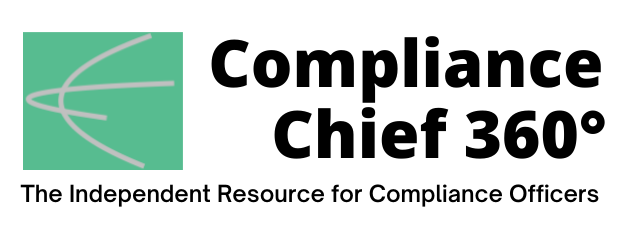
Rapidly changing elements of digital finance and geopolitical dynamics mean organizations need to continuously adapt and improve sanctions screening programs and AML measures for compliance programs to maintain their effectiveness and integrity. Regulatory enforcement of sanctions violations also appears to be on the rise. Managing sanctions risk has become more complex than ever.
To cope with this pressure and stay compliant, organizations need a strong sanctions screening program—one that achieves a healthy balance between data demands, compliance posture, and operational equilibrium.
Avoiding Data Malnutrition
Access to accurate, high-quality data is essential for a healthy sanctions screening program. Screening effectiveness can be compromised when dealing with incomplete or inaccurate data, resulting in an overwhelming number of alerts and false positives and increasing the risk of overlooking false negatives.
Compliance teams need to screen customers and transactions against a myriad of constantly changing sanctions lists that update often with new sanctions, modified existing ones, and some being removed.
Screening data needs to include both sanctions and customer data, which are the backbone of any healthy screening program. These insightful data sets enable businesses to accurately screen their customers (both existing and new) and transactions against the latest sanctions lists and prevent inadvertent engagement with sanctioned parties.
Additionally, there are a multitude of sanctioning bodies, including sovereign states, regional unions, and international organizations such as the Office of Foreign Assets Control that enforce their own sanctions—and these lists do not always align. Each sanctioning body has its own unique way of organizing and disseminating the data, which can create complexities in integrating and comparing the information.
Navigating through a variety of formats and sizes of sanctions lists, keeping track of frequent updates and ensuring real-time screening requires continuous effort and resources. This means organizations should use extensively researched and up-to-date global risk information that includes the latest Politically Exposed Persons and sanctions lists as well as adverse media and enforcement records from all corners of the world.
Even so, the strength of external data alone is not enough. The quality of customer data is equally important. Streamlining data acquisition processes and enriching customer and third-party data is a must. Organizations should invest time at the very front of their screening processes to cleanse and prepare their data. Conducting an internal data quality assessment will greatly improve process efficiency, saving time in unnecessary remediation.
Today’s high-risk global marketplace also means organizations need to have a clear understanding of their prospective customers and proactively assess the risks they may bring to their business. It’s not only customers, however, who can present sanctions risk. A comprehensive screening program encompasses a list of various entities connected to the organization’s operations including associates, beneficial owners, and the extended supply chain. Regularly reviewing and updating internal and external data is crucial for businesses, as regulatory bodies around the world constantly evolve their rules and restrictions to address geopolitical tensions, financial crimes, and global security concerns.
Strengthening Compliance’s Analytics Capabilities
Access to more accurate, high-quality data is critical for productive screening. While vast amounts of data can deliver deep insights, however, the sheer volume can cause problems for organizations seeking to identify suspicious activity that could constitute compliance risk.
This is where technology automation has a lot to offer. Applying powerful analytics and machine-learning techniques to screening programs helps accurately record, cross-reference, and analyze massive quantities of data and variables. This has distinct benefits when it comes to customer, vendor, and third-party screening as this activity requires the aggregation of disparate data sources including internal systems and external sources.
The world’s rapidly evolving regulatory landscape is increasing demand for organizations to proactively manage risk on a daily and sometimes hourly basis. As challenges continue to grow, it becomes imperative for tools and strategies to evolve accordingly. By harnessing the power of collecting, managing, and analyzing both external and internal data, organizations can gain strategic advantages in risk management. Embracing the latest technologies empowers them to proactively identify, manage, mitigate, and prevent risks effectively.
Organizations can use this increased capability to interrogate their records and identify screening issues earlier so they can move from a reactive to a proactive compliance posture and prevent or neutralize threats before they become a problem. Automating previously manual, time-consuming processes helps to reduce costs, improve compliance efficiency, and free up human resources for tasks that require emotional intelligence.
Boosting Operational Metabolism
One of the greatest challenges organizations face when it comes to sanctions screening is managing frequent alerts and false positives. This is particularly true for legacy systems that rely on fuzzy matching and rules-based screening, as these methods have limitations that make them less effective in handling the complexity of sanctions and countless changes to watchlists.
To address these challenges and reduce the number of false positives, businesses should turn to more advanced technologies such as machine learning and big data analytics. Modernizing legacy technology is a critical first step, ideally followed by a thorough analysis of the quality of the data organizations hold, as data gaps and inaccuracies can compromise screening effectiveness. Finally, organizations should avoid treating all false positives as equal without considering the likelihood of a match and the varying levels of risk. Using entity resolution tools can achieve this.
Deploying entity resolution tools to assess the relevance scores for alerts helps organizations transition from a perspective of quantity to one focused on quality. These tools help consolidate and link records that refer to the same real-world entity, even if the data points have slight variations or discrepancies, enhancing the screening process with improved relevance and matching precision for handling false positives.
Rather than relying on a rules-based method to accept or reject matches, entity resolution employs sophisticated analytics and accurate entity linking to match data points and assess the probability that two database records represent the same real-world individual, company, or entity. This process eliminates irrelevant data, enabling it to effectively identify matches and uncover concealed relationship risks.
This approach provides a quantitative assessment of customer risk, evaluating the strength of the match between a customer account and a watchlist entity. It focuses on identifying matches that merit immediate attention, ensuring a more targeted and efficient risk management process.
As the wellness of sanctions screening and AML programs faces ongoing pressures and emerging threats, innovative, more holistic approaches to screening are necessary. By leveraging the latest technology and engaging a high-quality, dynamic, and global data organization can enhance their match precision and prioritized risk ranking, resulting in a more accurate and effective screening process.
Forward-thinking organizations will gain stronger control over false positives and be able to achieve the much-needed balance between strong compliance posture and operational efficiency.
Grayson Clarke is senior vice president of LexisNexis Risk Solutions.

